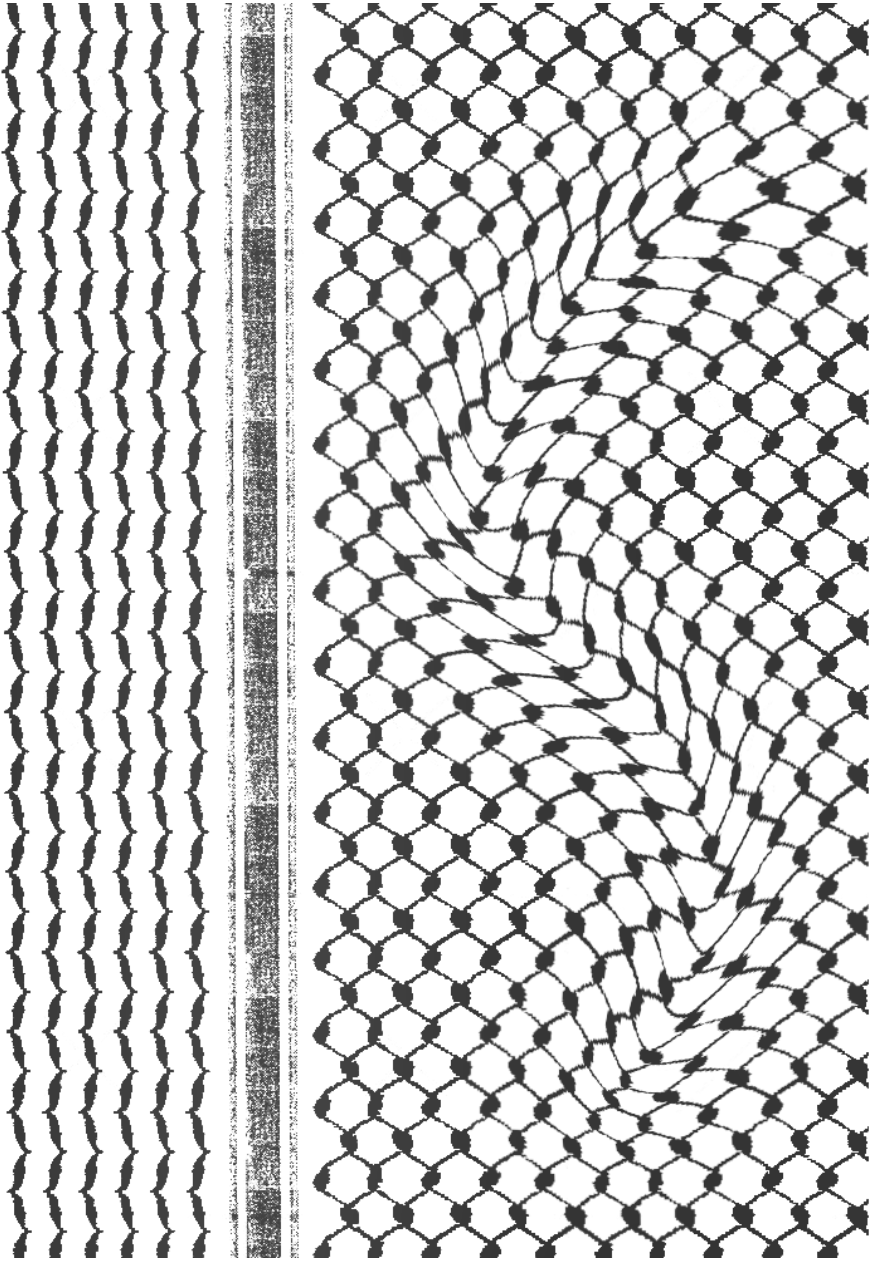Viscosity
Viscosity
By Jameel Shammout
In Artworks
Couldn't load pickup availability
Stock level: 1 left
Item details:
▸ Features: Limited Edition Handmade▸ Materials: Cardstock
▸ Art technique: Illustration Silk Screen Printing Hand-Printing
▸ Dimensions (cm): 42.0 x 29.7 x 0.1
▸ Net Weight (kg): 0.04
The Viscosity is a representation of the 1948 Nakba and the ongoing flight of the Palestinian people; this screen print portrays the pattern of the Kuffiyeh shifting and flowing like the fluidity of water. Just as water can be displaced from its source, redirected with obstacles, the Palestinian people were uprooted and forced to find new paths. Water, through fluidity and persistence, always maintains a connection to its source, the clouds that rain on the mountain to create rivers that end up in lakes will make it back up to the clouds one day, this is a certainty that can’t be changed. The resilience and stubbornness of the water’s flow mirrors that of the Palestinian people, whether that be by occupation and war in our homeland or as refugees and foreigners in the diaspora. Trauma and loss shape our narrative, much like how water shapes the landscapes.
Production year: 2024.
According to the Urban Canvas Exhibition's curator Dr. Pamela Chrabieh, "Viscosity" beautifully visualizes the fluidity of the Palestinian experience, where the keffiyeh’s pattern becomes a metaphor for displacement and continuity. The shifting patterns mirror the persistence of the Palestinian people, who, despite being uprooted, remain connected to their origins. This piece powerfully conveys the notion that just as water finds its way back to its source, so too will the displaced find their way back to their homeland, emphasizing the unbreakable bond between identity and place.

About Jameel Shammout

Jameel Shammout aka JamPam is a street artist focusing on topics that reflect his upbringing as a Palestinian in the diaspora. Born in Amman in 2001 to a family without roots in any one location, Jam moved through 8 countries and 3 continents before the age of 20. This life meant that one of the few common links between all the cultures he had to adapt to was art—the only internationally shared language.
While it’s common for artists to utilize street art, murals, and graffiti to build hope and resilience within communities, JamPam took a different approach. Surrounded by foreign societies that didn’t understand the effects of long-term occupation of a homeland or what it means for the population in and outside of the country, he used street art to offer those communities a new perspective.
“I wanted people to understand that war and occupation mean more than just numbers and statistics. I wanted people to relate to, if even just so slightly, what the Middle East has been through, and continues to go through. This pushed me to move away from the traditional forms of raising awareness and instead focus on how I can guide someone’s mind into my own. How can I find the connections between what expresses my emotions and what expresses yours? Finding that link between populations is what ultimately creates empathy and understanding between them.”

